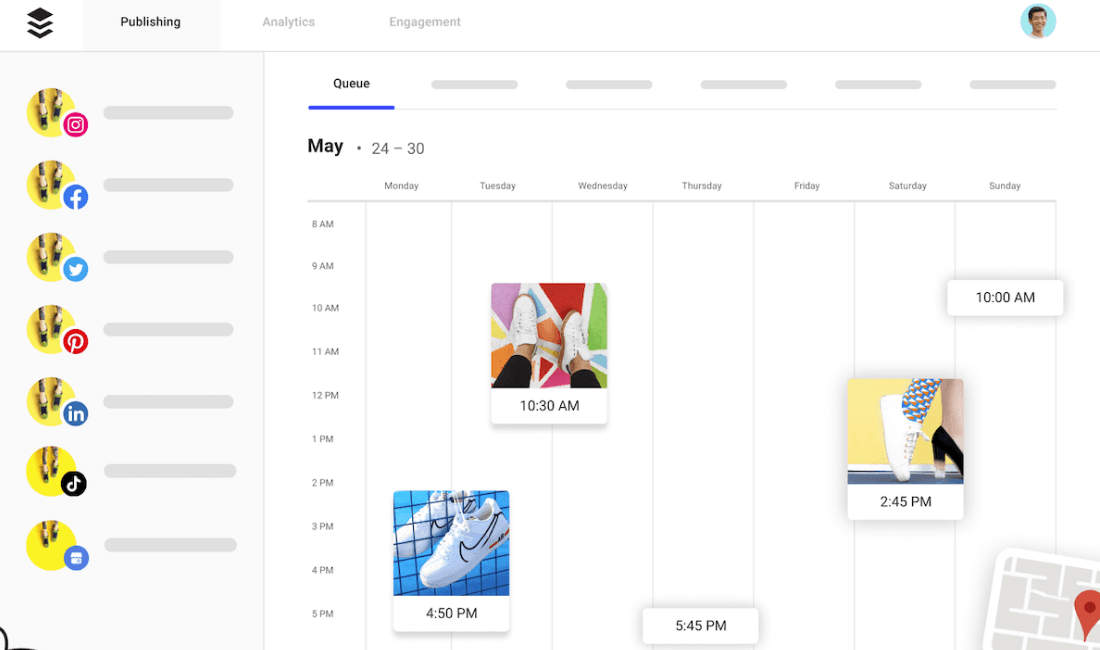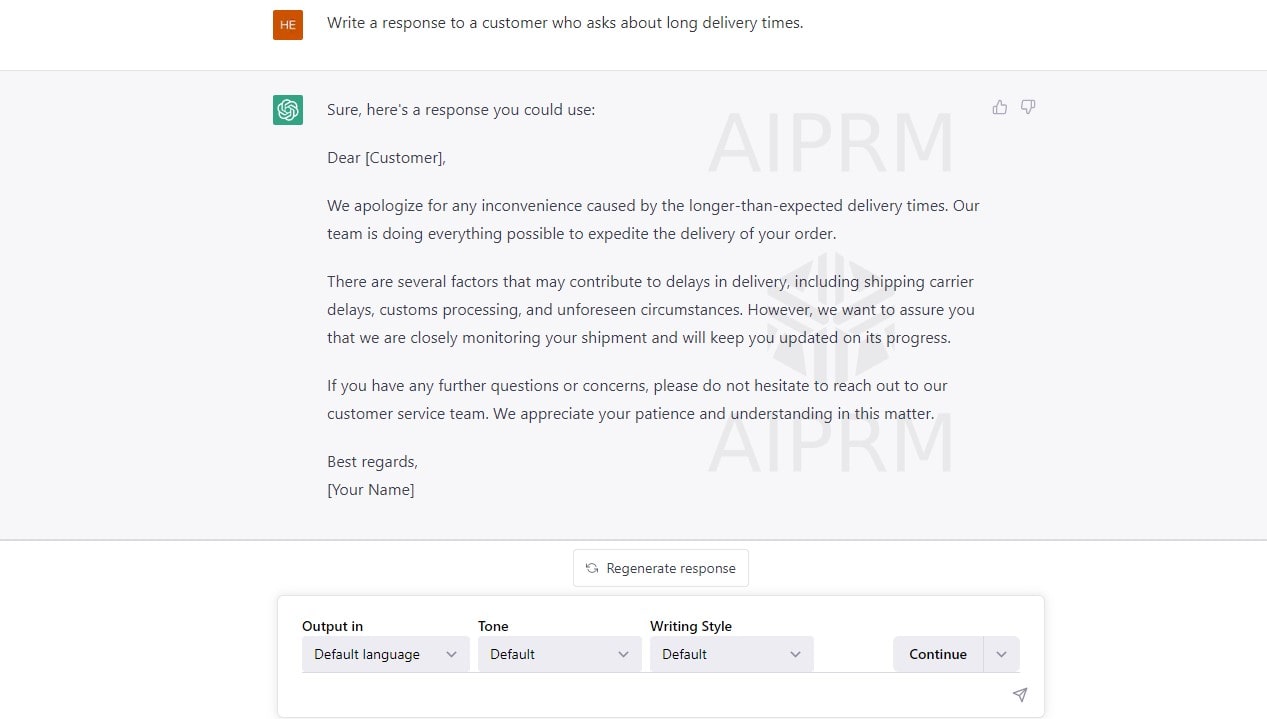Start right in the center of content marketing, a dynamic approach combining salesmanship and narrative. Content marketing’s basis is the use of valuable, relevant materials to attract and hold the attention of a target audience with the ultimate aim of producing profitable consumer activity. It means as follows:
- Development of engaging stories
- Consistent provision of high-quality components
- Developing close relationships with consumers
Content is the whole kingdom on the busy corporate terrain, not only king. Keeping current with your content strategy becomes critical as digital engagement influences consumer decisions. If you want to maximize your web contacts, look at Plerdy—a great tool for CRO & UX that will improve user experiences and increase conversions. Increase your company’s competency and permit your material to shine!
Introduction to Content Marketing
Content marketing takes front stage in modern business. It acts as the link between companies and their target markets since a strategic strategy zeroing in on producing, distributing, and amplifying great content helps them. Content marketing provides insights, solutions, and involvement – creating real connections – whereas conventional advertising techniques scream messages.
As an illustration:
- Clothes Industry: Companies create interesting blog entries about environmentally friendly clothes to help readers make ethical decisions.
- Companies in the tech industry provide educational seminars or whitepapers to help possible customers negotiate challenging software ecosystems.
- Hotels and restaurants enthrall visitors with behind-the-scenes movies or tales of procuring locally grown food.
Content marketing is anchored three-fold by three keystones:
- Value-driven content isn’t about self-promotion. It’s about really adding value, responding to questions, and presenting ideas.
- Keeping viewers interested guarantees they can depend on consistent, high-quality material.
- Strategic distribution of content guarantees it reaches its intended audience, hence enhancing effect.
Companies use content marketing’s ability to create trust, strengthen community, and position themselves as thought leaders in their field not only to increase sales but also to Content marketing is like a lighthouse pointing companies to their intended beaches in this technologically dominated era where people value real interactions and relevant information.
Why Content Marketing Matters

In modern business, content marketing promotes actual corporate connection. More than just creating videos or articles, the art and science of crafting engaging messaging linking companies and audiences calls for creativity.
Exist these niches:
- Healthcare: Podcasts on holistic wellness allow institutions to directly interact with health-conscious consumers.
- Dealerships create interactive infographics on vehicle maintenance to guide car owners toward maximum ride lifetime.
- Chefs and restaurateurs publish mouth-watering recipes online to draw foodies into their orbit.
Explore the reasons content marketing is so important.
- Trust Development: Regular, worthwhile material helps companies establish credibility as industry leaders, therefore promoting audience reliance.
- Interactive and well-organized material can transform passive viewers into active contributors, therefore enhancing brand loyalty.
- Providing thoughtful material guarantees consumers make decisions with clarity and confidence.
Using content marketing helps companies not only increase revenue but also create their own niche in a crowded market. Content marketing is the compass guiding businesses to long-term success and significant influence in a digital age where consumers yearn for substance over flash and authenticity rules over overt advertising.
Core Principles of Content Marketing
Negotiating the complex terrain of content marketing calls for a strong awareness of its fundamental ideas. Every meaningful brand-consumer interaction starts with these values.
Explore the industry’s heartbeats—travel, health, and sports among others:
- Travel: Agencies create gripping stories about off-the-beaten-path experiences, calling travelers to discover unspoiled beauty.
- Health: Fitness buffs create interesting training DVDs that challenge their limitations.
- Sports: Companies combine behind-the-scenes video to enthrall viewers into the exciting universe of their preferred sportsmen.
Fundamentally, content marketing is based on:
- Companies should stand up and tell real tales to create actual relationships.
- Share material that guarantees people walk away richer in understanding, so offering valuable insights.
- Content should be tailored to appeal to the particular tastes of different audiences.
- Agile Adaptation: Keep on alert and modify plans depending on feedback and new trends.
- Spread out and conquer several platforms to guarantee a wide audience and more interaction.
These fundamental ideas enable companies to capture audiences and foster trust. When done right, content marketing allows companies to subtly fit into the lives of their consumers, therefore fostering conversations, emotional reactions, and a link outside the digital sphere. A brand can reach hitherto unheard-of success by mastering material that speaks to, informs, and interacts with people.
Components Driving Effective Content Marketing

Every company wants to make sure its audience remembers it, and good content marketing turns out to be the link between ideas and behavior. From fashion to technology, many genres use important elements to guide their content marketing initiatives.
Think back on sectors including food, technology, and fashion:
- Fashion: Companies create interesting visual narratives showing runway trends melding perfectly with streetwear.
- Tech: Creatives dissect difficult ideas into bite-sized infographics so that everyone may enjoy the most recent developments.
- Food: Chefs create gourmet experiences out of common foods by whippering perfect recipe videos.
Main forces for strong content marketing consist in:
- Customized Strategies: Know the pulse of your audience and provide materials fit for their requirements and preferences.
- Tell gripping stories that captivate readers and turn them brand champions.
- Maintaining a consistent tone over all media helps to build brand recall and confidence.
- Using user-generated material and comments can help you to improve and change your approach.
- Explore many content forms, from podcasts to infographics, to grab and keep attention.
Adopting these elements guarantees the seamless operation of your content marketing tool, therefore promoting involvement and loyalty. Modern marketing is based on content, hence companies that excel in this area will not only survive but also flourish among the noise. Content creation is, after all, about debates, experiences, and lifelong impressions. Content marketers that grasp and implement its concepts will be successful in digital marketing.
Exploring Popular Content Marketing Formats
Companies engage audiences using a range of content marketing approaches. Every format appeals differently in different sectors, which lets companies satisfy various customer tastes.
Think about these customized strategies applied in several fields:
- Blogs: Comprehensive blog entries are what drive sectors like travel and health. Travel companies spin stories of far-off locations, for example, while health brands explain difficult wellness issues.
- Financial companies simplify complex data into visual masterpieces that let one better understand market movements and forecasts.
- Podcasts: The IT industry hums with conversations about ideas, allowing fans to listen in on voices dissecting the most recent discoveries.
- Beauty companies highlight product uses in video tutorials, which help amateurs become masters with methodical direction.
- Lifestyle companies utilize interactive quizzes to allow consumers find personal style preferences or health practices, therefore strengthening closer brand relationships.
These formats let companies provide consumers useful insights, amusement, or skills, therefore transcending conventional marketing limits. For example, podcasts let techies plug in during commutes, and interactive quizzes transform casual browsers into active users eager to explore more what a company has to offer.
Using the correct combination of content forms, marketers create custom experiences for their target market. The goal is not only to share knowledge but also to encourage a two-way dialogue whereby customers feel observed, heard, and respected. Businesses not only build loyalty but also create the conditions for long-term success in a competitive environment by matching audience tastes and industry-specific trends. Using this multifarious approach to content guarantees that brands actually flourish rather than merely survive.
The Lifecycle of Content Marketing

In the ever-changing field of content marketing, companies hoping to leave their imprint depend on knowing the lifecycle. It’s a choreographed dance of strategy, production, distribution, and polish, not only about invention. It plays out like this:
- Research and Strategy: Get right into the psyche of the audience. A health brand might find, for instance, what wellness issues most appeal to its target market, which would guide appropriate material.
- Creation and Production: Create custom tailored material. A fashion company might create interesting video material highlighting the hottest clothing from the season in action.
- Push material to where your audience hangs out for distribution and promotion. An e-commerce platform could highlight its products via social media influencers, hence increasing traffic and interaction.
- measurement and analysis: Evaluate the influence. By means of tools, a B2B organization can identify the whitepapers or webinars most responsible for generating conversions.
- Optimizing and refining calls for feedback loops. Seeing a rise in vegetarian recipe views, a food blog can change its focus to appeal more to this audience section.
Companies interact, learn, adjust, and develop in an always changing cycle. Driven by ideas and seeking closer audience relationships, each stage complements the next. Masters of this cycle help their brands to be leaders rather than just players. Top-tier organizations’ dedication to learning and iterating helps them to adjust to consumer tastes and changes in the market. This lifecycle is what keeps companies in line with their audience in the huge terrain of content marketing, so guaranteeing continuous relevance and success.
Challenges and Roadblocks in Content Marketing
Even seasoned experts occasionally stumble in the busy terrain of content marketing. Although the road to producing resonant material is fulfilling, companies sometimes encounter obstacles that could throw off their approach. Let’s examine some typical obstacles:
- Consistency Hiccups: First and foremost, grab the audience’s interest. A tech startup might, for example, produce a viral blog post but then struggle to sustain that momentum, leading to declining involvement.
- Relevance Issues: Interests change along with the trends. Wanderlusters may show declining interest to a travel agency that does not change its offerings during off-peak seasons.
- Limited resources: Excellent material doesn’t just materialize. An e-commerce firm might not have the staff or tools needed to produce excellent infographics, films, or articles, therefore stifling their marketing goals.
- Woes in Performance Measurement Without appropriate measurements, knowledge of impact turns into a guessing exercise. Even if a fitness firm develops great exercise programs, it could fail if it does not identify which forms really appeal.
- Though feedback is gold, too much can muddy the waters. A gourmet café trying to satisfy every piece of advise could wind up with a diluted and unclear corporate statement.
To solve these challenges one must be agile, foresighted, and creative. Effective companies are always ready to change their plans and face challenges head-on. Staying aware of audience needs, using the correct tools, and learning from mistakes will help businesses to turn obstacles into stepping stones. Resilience and adaptation distinguish innovative companies in the large ecosystem of content marketing thereby enabling them to create material that not only informs but also captivates and converts.
Essential Tools and Platforms for Content Distribution

Companies are always looking for strong strategies to distribute their masterpieces inside the vast content marketing ecosystem. Getting material in front of the appropriate eyes may make all the difference, whether it’s a gripping video from a fitness company or a smart post by a financial counselor. The following is a list of key tools and platforms that have changed the way materials are shared:
- Buffer: Simplifies brand social media publishing. Imagine a jewelry designer preparing to present handcrafted items; Buffer allows them to plan postings across several platforms, therefore guaranteeing maximum reach.
- More than just a CRM, HubSpot provides automatic content delivery, which helps, example, an e-commerce business more precisely target possible consumers.
- MailChimp: Content distribution still finds email to be a powerhouse. Weekly newsletters produced by a neighborhood bakery help to keep their customers informed about new products and guarantees their retention.
- Offers a bird’s-eye perspective of social media interactions using Hootsuite A young musician might track song shares, monitor audience responses, and adjust their outreach approach using it.
- Medium: Both a refuge for readers and authors. Using a community ravenous for well-researched material, an environmental activist might publish opinion pieces here.
Equipped with the correct tools, companies can magnify their communications, therefore guaranteeing they land with impact rather than merely float in the digital sphere. Using these channels, marketers minimize the anarchy, simplify their work, and ensure their material speaks loud and clear rather than just whispers. Having the correct distribution toolkit is not only helpful but also very essential in the changing story of content marketing.
Metrics and KPIs: Gauging Content Marketing Success
In the huge sea of content marketing, metrics and KPIs serve as the compass, guiding companies to targeted locations. Without them, even the most interesting material may wander aimlessly with little effect. Effective marketers understand that every piece of material—from a tech wizard’s how-to video to a fascinating blog by a travel enthusiast—demands quantifiable results.
Important signals companies should focus on include:
- Measuring likes, shares, and comments helps businesses to understand audience interaction. Think of a fitness influencer sharing training plans; a spike in interaction could suggest the material that really connects with you.
- The click-through rate (CTR) measures call-to- action effectiveness. A publisher of e-books, for example, might evaluate which titles most appeal to readers using CTR.
- E-commerce sites track how many individuals register for newsletters or make purchases using conversion rate.
- Bounce Rate: Measures consumer interest. Should a gourmet chef’s recipe page show a high bounce rate, it could be time to liven things up.
- Retention Rate: Shows the count of returning visitors. For instance, a digital art platform would track this to see whether its tutorials inspire artists returning for more.
By delving deeply into these indicators, companies may avoid traps, hone their strategy, and focus especially on what works. Learning these benchmarks helps one to plot a road toward significant involvement, better return on investment, and materials with not only resonance but also relevance. Knowing these KPIs guarantees your voice stands out in the busy market of ideas.
Content Marketing vs. Traditional Marketing: A Comparison

Content marketing and conventional marketing are two different strategies with individual flair in the busy market of today. Although both want to raise the voice of a brand, the approaches and results vary greatly.
Let me dissect it:
- Content marketing focuses especially on developing relationships. A neighborhood coffee shop might maintain a blog covering bean sources, methods of preparation, and coffee culture. This strategy builds brand reputation as a thinking leader and confidence. Conversely, with an eye toward instant sales, traditional marketing—think of billboards or TV commercials—mostly promotes goods or services.
- Cost & Reach: Digital channels let content marketing fly free without emptying the pocket. An indie musician might publish a SoundCloud tune and overnight attract worldwide listeners. On the other hand, traditional marketing sometimes requires greater money; scheduling front-page newspaper ads or prime-time TV slots is not inexpensive.
- Content marketing lives on comments and flexibility. Based on consumer reactions on its Instagram posts, an online clothes company can modify their approach. Conventional techniques, meanwhile, provide little real-time input. Once a magazine advertisement is published, audience reaction determines neither turning back nor adjustment.
- Content—especially evergreen videos or articles—keeps interesting long after it is published. For years, a thoughtful piece on sustainable farming would enthrall readers. But conventional advertising have a shorter lifetime; they fade from recollection once the campaign ends.
Using both of these strategies calls for a mix of knowledge and creativity. Companies must find the ideal mix between using the instantaneous influence of conventional approaches and the immersive narrative capability of content marketing. Brands that change and combine both approaches stand tall in an ever-changing terrain and really connect with consumers.
Real-world Case Studies and Best Practices
Real-world case studies direct companies trying to grasp the extensive ecology of content marketing. Acting as useful roadmaps, they emphasize the best practices to welcome as well as the hazards to be avoided.
Think of the following:
- Growing fashion brand Sustainable Fashion House supported environmentally friendly living. They displayed their supply chain and manufacturing techniques rather than only marketing environmentally friendly products. Their brand became more well-known and a loyal customer base was created by this open narrative style.
- Health and Wellness App: A wellness app launched a series of user-generated content initiatives in response to wanting to increase user involvement. Encouragement of users to share their health journeys, the site transformed personal stories into engaging material, therefore enhancing user loyalty and trust.
- Local Artisan Bakery: Using nostalgia, a bakery sought to stand out in a saturated market. By use of stories of customs, family recipes, and old-world baking methods, we spun local buzz and broadened their clientele.
From these cases, some excellent practices show themselves:
- Building a narrative still rules supremely. Explore closely what distinguishes a brand and craft a story that speaks to you.
- Involve and engage: Motivational user involvement is key. Content drawn from actual users lends credibility and authenticity.
- Consistent brand voice and message are really vital. Make sure material reflects the general company values.
Examining case studies and best practices helps companies to have the knowledge to customize plans that provide noticeable outcomes. Understanding the many levels of prior triumphs helps businesses create their own powerful content marketing plans.
Innovations and Trends in Content Marketing

The always changing terrain of content marketing never slows down the rate of innovation. Companies and marketers often look for new ways to captivate consumers so that their messages stand out in a busy online market.
Specifically:
- Once seen as innovations, virtual reality and augmented reality today provide immersive experiences. Imagine a tourism firm creating virtual reality experiences of far-off locations—a powerful means of attracting possible travelers.
- As smart speakers proliferate, material has to be ready for voice search as well. For example, recipe blogs gain greatly from making sure their material is easily available with a basic voice command.
- Platform like Snapchat and Instagram Stories’ success emphasizes the potency of ephemeral material. Makeup companies sometimes use this, running flash deals or limited-time tutorials to create urgency and involvement.
Notable among emerging trends and tools are:
- Using data to customize content experiences is not only great-to-have but also becoming standard for artificial intelligence-driven personalizing. By means of user behavior, fitness apps can provide workouts and diet programs catered to specific requirements.
- Podcasting: The explosion of on-the-go audio material gives companies access to listeners during daily commutes or gym visits. Financial advisers, for example, divide difficult subjects into manageable podcast episodes.
- Story of Sustainability: As environmental friendliness becomes more and more important, businesses supporting green projects employ material to tell their story and goal, attracting environmentally minded customers.
Maintaining current with these trends guarantees companies stay flexible and change their tactics in line with changing customer demands. With so much promise, content marketing’s future calls brands to grab the chances it offers.
Strategies for Sustainable Content Marketing
Companies try to create deep relationships with their audience in the busy terrain of digital marketing. Content marketing leads this quest first, but over time it will remain effective only if sustainability is given top priority.
Imagine a gourmet coffee shop ready to grab its place among the many cafés in a city. Creating material on finding ethically cultivated beans or holding seminars on the art of espresso can attract customers first. To keep them returning and bringing friends, though, a consistent, strategic approach to content becomes very crucial.
Examining tactics for maintaining success in content marketing:
- Evergreen Excellence: Create material that stays current independent of passing trends. An environmentally friendly clothes company might discuss the ageless worth of sustainable materials to make sure the material stays current and practical.
- Use transformation to give old material vitality and purpose. Create an infographic or a video tutorial from a well-received blog post to increase interaction and reach.
- Regular publication of quality material builds confidence. A financial consulting company might promise bi-weekly pieces demystifying the complexity of investment, hence reinforcing their status as industry gurus.
- Use community comments to guide your adaptation. A fitness platform might highlight success stories from its customer base, producing real, relevant material that connects.
- Different Content Categories: Combine your material distribution. To appeal to a range of customer tastes, a home design firm might combine photo galleries of themed spaces with how-to advice on getting the look.
Creating lasting content marketing plans helps a company establish itself in the consciousness of its target market, therefore promoting loyalty and long-term expansion. Companies which give sustainability first priority in their content efforts will surely stand out as technologies and trends change and find ongoing resonance in their sector.
The Future Landscape of Content Marketing

Content marketing’s always changing horizon asks companies to foresee the next wave of innovation. Once dominated by simple blogs and short pieces, the digital sphere is now diversified at explosive pace. The once distinct line separating content marketing from other digital approaches fades and becomes a whole digital experience.
Imagine a travel agency from a bygone age depending just on pictures and brochues. These days, augmented reality lets them transfer possible clients into locations. The stakes climb, but so do the chances.
Charting the newly discovered landmarks:
- AI-driven platforms will examine user behavior and provide tailored information based on that analysis. Custom reading lists, based on reading rate and mood rather than only genre inclination, might be recommended by an online bookshop.
- Content for voice search is especially important since smart speakers are becoming ubiquitous in homes. Recipes, for example, will need adjusting to fit step-by–step vocal directions and spoken questions.
- Interactive formats mean that material will move from passive to active involvement. Rather from sharing tutorials, a cosmetic firm might provide augmented reality apps for online product virtual testing.
- Stories of sustainability: Eco-aware modern customers describe themselves. A brand selling reusable water bottles could change their material to show environmentally friendly manufacturing techniques, therefore building credibility.
- Community-driven Content: Crowdsourcing turns into a really useful tool. An athletic gear firm might highlight user-generated exercise challenges, therefore strengthening a close-knit group.
Navigating this transforming terrain calls on companies to upskill, adapt, and most crucially pay attention to their audience. Early adopters of these changes will embed themselves firmly in the future of content marketing, forging close relationships with their changing audience.
Finally
delving further into content marketing, we have discovered the fundamental need of combining creative storylines with smart business plans. Clearly, simplifying material into a strong brew of marketing magic has made numerous companies into soaring brands. As we have explored, we have seen how:
- Content selection’s precision generates notable traffic.
- Talking about goods or services is insufficient; the storytelling is what drives the needle.
- Customized approaches produce exponential expansion and foster ties with consumers that strengthen brand loyalty.
- Like Plerdy’s SEO & UX study, digital tools support these initiatives and provide sharp insights for best interaction and onboarding enhancements.
Keeping current with trends, regularly assessing performance, and making required changes is absolutely vital in the always changing digital terrain. Make sure you have the necessary instruments. Why not improve your content strategy with Plerdy’s thorough research? Reach more people, appeal to what your readers want, and glide easily across the exciting field of content marketing. With the correct strategy, corporate success guarantees rather than only a goal. Keep sharp and count on every bit of material to be valuable.
